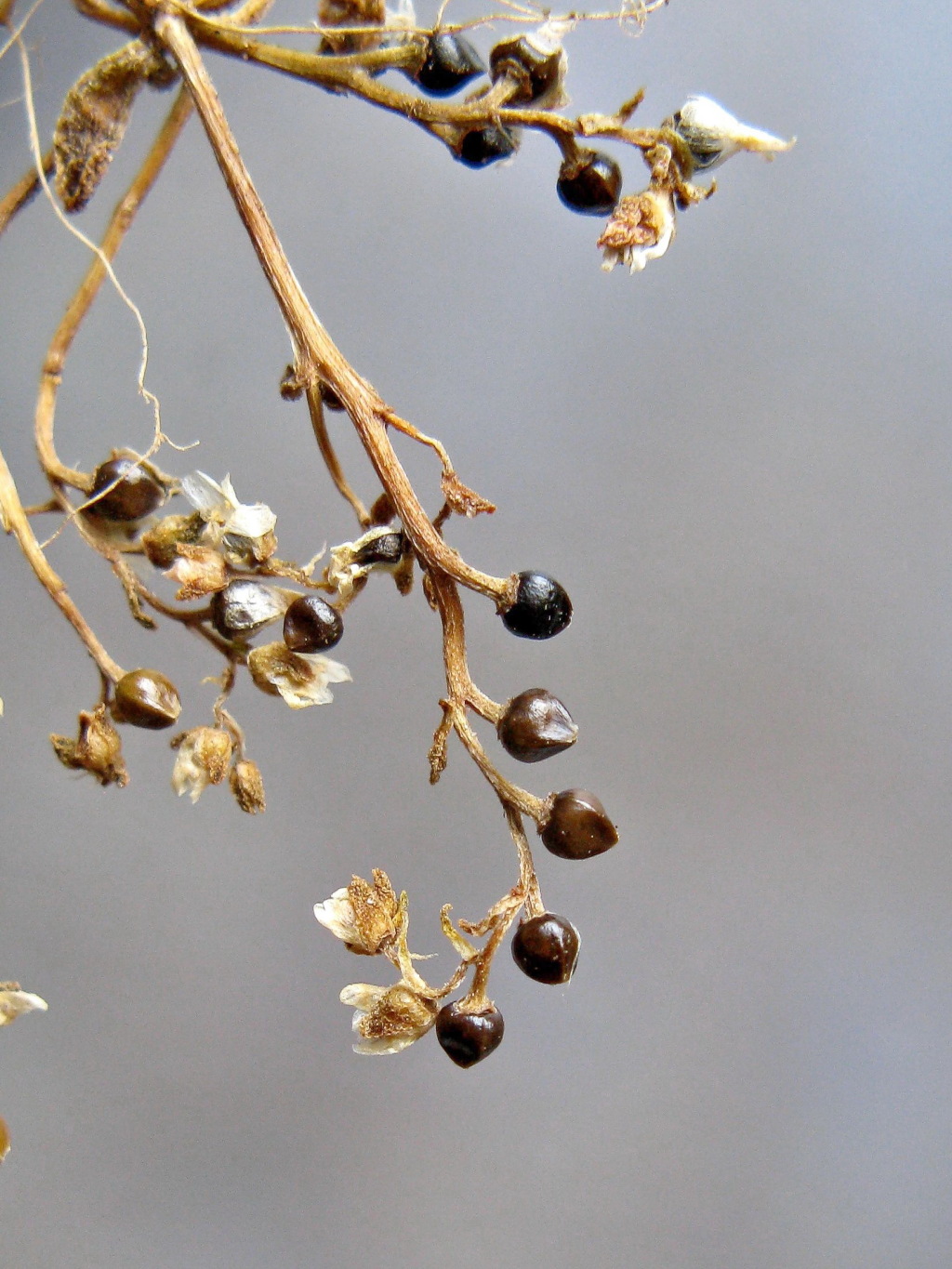Calandrinia granulifera
Benth. Pigmy PurslaneAscending to erect ephemeral, stems to c. 5 cm long. Leaves basal and on flowering stems, narrowly obovoid to almost globular, the largest to c. 1 cm long, 0.5 mm diam. Flowers up to c. 10 per branch; bracts alternate; pedicels to 2 mm long, erect and rather thick in fruit; sepals ovate, very thick, 1–2 mm long in flower, enlarging to 3–4 mm before falling; petals 5–7, 2–3.5 mm long, white to pale pink; stamens 5–10; style trifid to base. Capsule ovoid, somewhat 3-angled, 2–3 mm long, blackish, shining, splitting into 3 valves in the upper third; seeds numerous, obliquely obovate-cuneate, c. 0.5 mm long, red-brown, colliculate in several dorsal lines, almost smooth on sides. Flowers Sep.–Nov.
LoM, MuM, Wim, GleP, VVP, VRiv, RobP, MuF, GipP, Gold, CVU, GGr, DunT, NIS, HNF. Also WA, SA, NSW, Tas. Widespread and seasonally common in the north-west, where occurring on dunes, or more commonly in sandy depressions. Occasional elsewhere (e.g. Grampians, Warby Ranges, Wedderburn areas), where sometimes associated with rock outcrops. Probably now extinct from You Yangs and St Kilda areas where collected pre-1900.
Walsh, N.G. (1996). Portulacaceae. In: Walsh, N.G.; Entwisle, T.J., Flora of Victoria Vol. 3, Dicotyledons Winteraceae to Myrtaceae, pp. 215–224. Inkata Press, Melbourne.
 Spinning
Spinning


